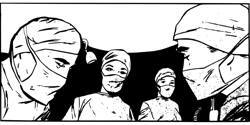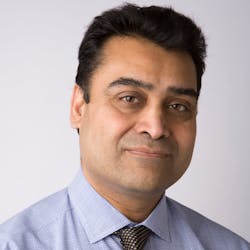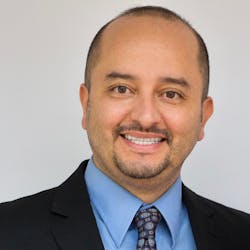In the August 2019 issue of Healthcare Purchasing News, experts discussed the many things that can go wrong in the operating room human error, equipment malfunction, poor process as well the many solutions readily available to ensure those mistakes don't happen again.
But there’s another safety issue that doesn’t get nearly the amount of attention or resolve, yet is as unsafe and scary as any other OR hazard – nurses and surgeons with substance use disorders (SUDs), including those who engage in drug diversion (stealing controlled substances reserved for patients). It’s more common than people might think, and as the nation battles the deadliest opioid crisis on record, hospital drug diversion is also beginning to receive the meaningful attention it deserves.
The BD Institute for Medication Management Excellence commissioned an independent national survey of more than 650 hospital executives and providers to better understand hospital diversion perceptions, behaviors and solutions. The resulting report, Health Care’s Hidden Epidemic: A Call to Action on Hospital Drug Diversion, released in early June, reveals some thought-provoking beliefs among its respondents.
“Four out of five providers who were surveyed are concerned about drug diversion in U.S hospitals, but only 20 percent believe diversion is cause for concern in their own facility,” said Banerjee. “Despite this, half of respondents say they have observed suspicious activity in their hospitals that may have been evidence of diversion.”
Tricky, delicate situation
“Diversion can occur many different ways, hence the difficulty in catching it,” Garcia added. “It can be in the form of falsifying charts and diverting it from the patient; it can occur when ‘extra’ is taken out, so the patient gets their does and the provider gets the extra. Oftentimes partial doses are ordered, and the extra medication should be properly wasted. However, this is an ideal opportunity for diversion of the waste to occur. Tampering and substituting out medication has also been known to occur. A very important point to consider is that the impaired provider is always ‘one step ahead.’ There is always going to be a new diversion technique, a new medication of abuse, and a new way to circumvent the revised policy.”
Diversion is also difficult to address because of a lack of uniformity in reporting, not identifying cases early and lack of effective, unvarying intervention protocols. As for those who are secretly struggling with a SUD, he says very few – between four and five percent – ever self-report the problem even when they want help, which isn’t surprising since the stigma of addiction is pervasive in this country. To make matters worse, someone struggling with addiction and feeding it with drugs that are meant for patients is likely to be stigmatized on a grander scale.
Garcia says opiates have always been the No.1 drug that hospital workers divert, followed by benzodiazepines, but now it seems a few others are gaining popularity. “As diversion identifying techniques improve and drug testing becomes more specific, increases of non-controlled substances like propofol and ketamine and are on the sharp rise. They are difficult to track, difficult to test for, and with the small margin of error with these medications, increasing accidental overdoses are expected to increase as well,” Garcia warned. “It is also important to keep in mind that ‘impairment’ takes many forms. The surgeon need not be ‘shooting up’ before a case to be impaired nor does a nurse need to ingest medications while on shift to be impaired.
"Impairment, secondary to substance use disorder, presents itself in the provider that is going through withdraw and not able to render safe care," he continued. "It shows up as the provider’s preoccupation with how to get the next fix so that the debilitating withdrawal symptoms might subside, distracting them from providing quality care. Impairment is evident in the hungover provider who was up late and not well rested for the surgery case or the critical ICU patient that awaits them. Prevention, education, and early identification are the optimal formula for getting a hold of the impaired provider, otherwise they will usually be discovered when the actions and or errors can no longer be ignored.”
After the BD Institute for Medication Management Excellence reviewed the results of its survey, Banerjee said the organization come up with some recommendations for mitigating drug diversion. They include:
Data and technology. Healthcare facilities need more accurate data and reporting technology to identify suspected diverters without generating false positives. Specifically, 59 percent of healthcare executives want more accurate data to reduce false positives and 54 percent would like artificial intelligence (AI) or machine learning technologies and advanced analytics.
Education and training. Formal training, diversion-focused materials, team meetings, and lifelong learning approaches can improve controlled substances handling and documentation. Only 30 percent of respondents reported receiving mandatory diversion training at their facility.
Staffing and enforcement. Most survey respondents reported their hospitals had between one and five staffers focused on diversion oversight, monitoring and detection, even in large hospitals with more than 450 beds. Additional staff could be a sound investment in quality and safety, to help improve surveillance and detection.
Culture of support and open communication. Hospitals also have an opportunity to offer and encourage frontline-staff to engage with the programs that provide support and rehabilitation for diverters. Providing an obvious path for people to self-report could bring more forward to get the help they need.
“Hospital executives and providers said they believe that, if given the appropriate resources, diversion can be significantly reduced,” Banerjee noted. “Ultimately, we hope this report sparks a national conversation, spurs much-needed research, and leads hospitals and health systems to adopt comprehensive diversion programs. A relevant analogy is medication errors, which were a significant problem in U.S. hospitals but largely under-discussed until 20 years ago, when new research and resulting data dramatically reduced the problem. Rather than place blame on individuals, a new approach was adopted by hospitals that identified and addressed medication error system faults. We believe this model could offer a way forward against drug diversion, as well.”
As for medication and the multitude of other errors that occur in the surgical environment, until the data arrives, nobody knows for sure just how many of those mistakes may have been made by individuals secretly struggling with a SUD.
Who is most likely to divert drugs?
The stereotypical profile of the addict of yesterday is not the picture of the addict of today. This is one reason why the impaired provider is able to divert for extended periods of time, often many months or even years.
They are intelligent, graduate in the top 25 percent of the class and hold advanced degrees. They are leaders and supervisors and often described as “excellent” or “the best.” They are well-liked, charming, and win awards. They come in early, stay late, give many breaks, and are the most helpful. More times than not, it is a shock to the department and they never saw it coming.
Staff members that are more likely to divert have increased access and high stress positions. In addition, they often have an underlying mental health condition such as depression, generalized anxiety, insomnia, or emotion/ physical or PTSD trauma. It is often described as a perfect storm that just needs a small spark to initiate the cascade events leading to addiction. That “spark” is most often an injury, a legitimate prescription, or it starts after a surgery and subsequent opioids during the recovery period. That is often all it takes to get the ball rolling and once it starts, it is nearly impossible to stop by one’s self.
Rodrigo Garcia, CEO, Parkdale Center for Professionals, Parkdale Solutions
About the Author

Valerie J. Dimond
Managing Editor
Valerie J. Dimond was previously Managing Editor of Healthcare Purchasing News.


